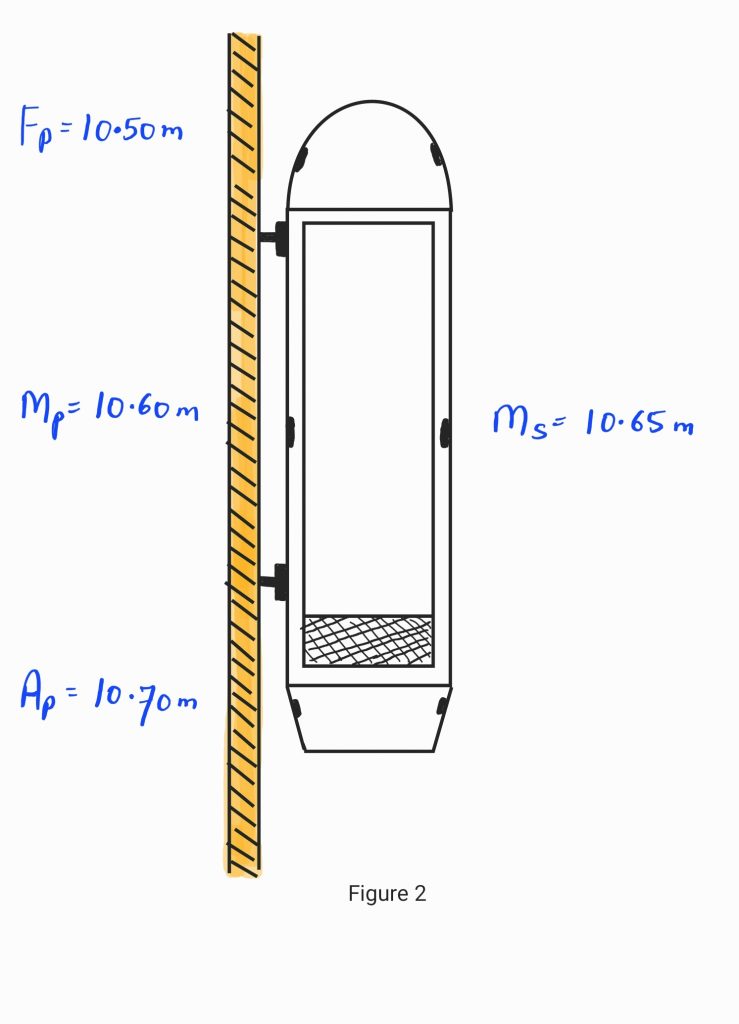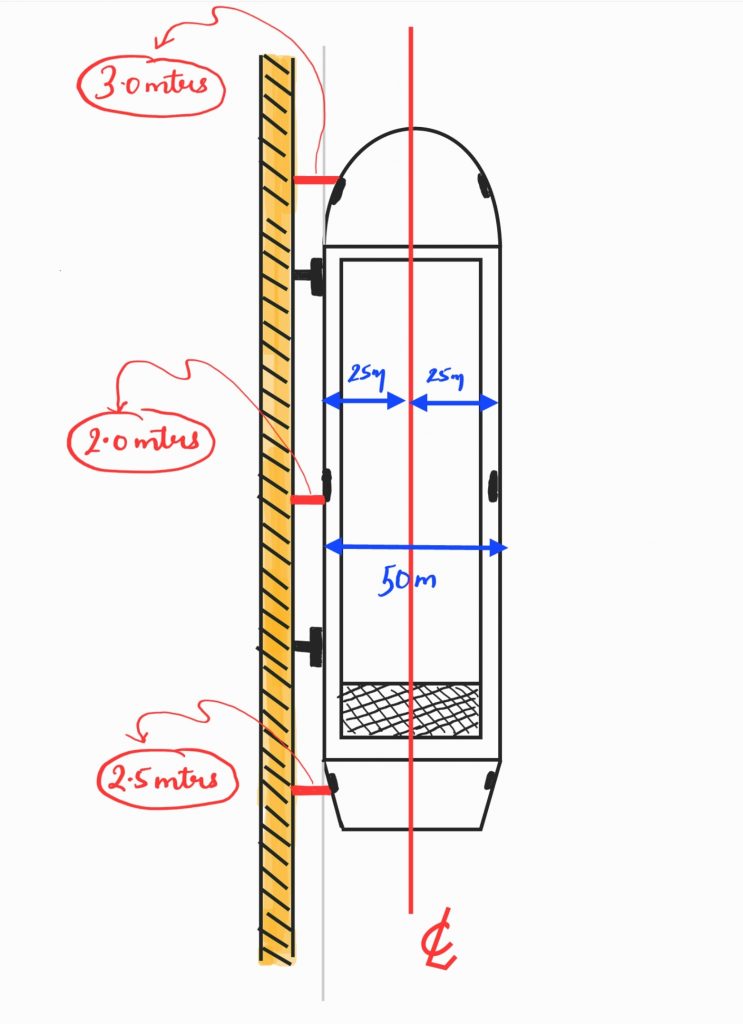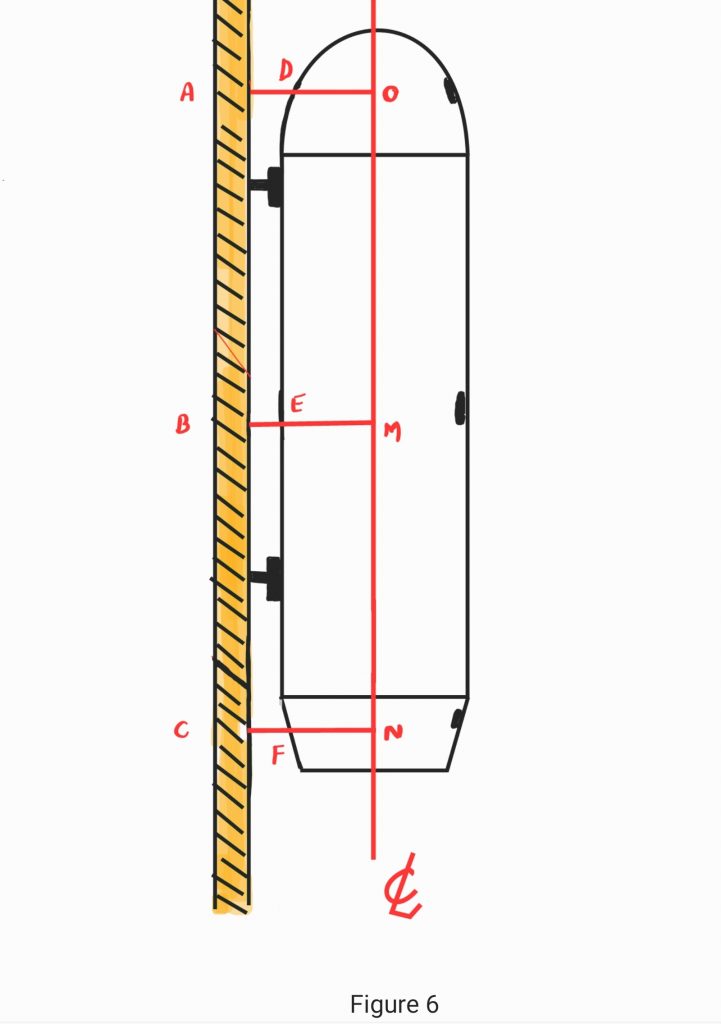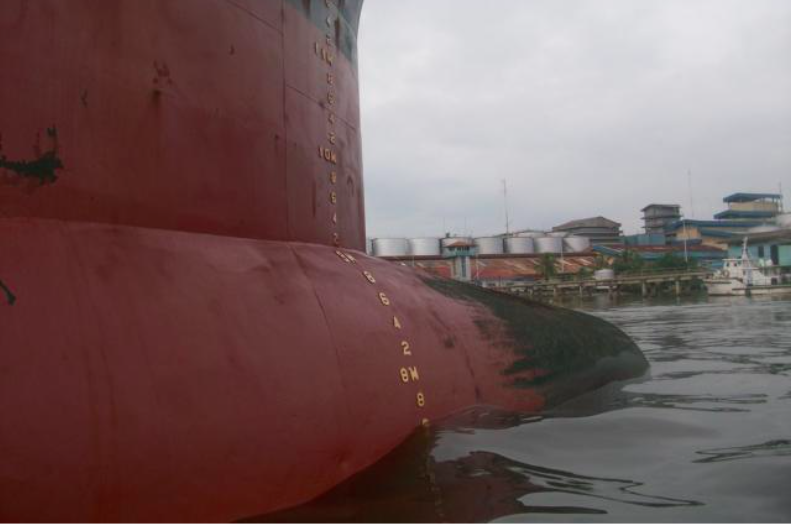- Your gateway to the Maritime Knowledge!
- [email protected]
Not able to obtain all six drafts? Here what you should do!

What to do when the Cargo has shifted?
May 24, 2021
Everything you need to know about Grain Loading | Grain calculations | Grain Stability | Part I
June 6, 2021This blog teaches you how to calculate sea side drafts which you are unable to obtain otherwise.
Among many other factors, the accuracy of the draft survey depends upon the accuracy of the visual drafts obtained. So, it is very important to obtain the drafts as accurately as possible.
At many ports you might find a small boat waiting for the Chief Officer and the Draft Surveyor to begin the Draft Survey as soon the vessel berths. This is crucial because the Chief Officer needs to obtain all the drafts in order to perform a good draft survey. The boat is normally used to obtain the sea side drafts which are very much impossible to be read off using a ladder (except the sea side midship draft which can be obtained by ladder or manometer, if fitted).
But just think of a day when you are a bit unfortunate and you are berthed at a terminal where there is no service boat available. What are you going to do? Although you might be able to obtain the jetty side drafts quite comfortably followed by the sea side midship draft using a draft ladder rigged on the sea side or a manometer (if fitted).
But then what about the Sea side forward and aft draft? How are you gonna measure them?
Well if you are facing the same problem then this blog is for you. Let’s begin!
The first thing you should know is the position of the draft marks on the ship’s hull. For this you can observe them carefully while you are standing on the jetty or can have a look at the plan which will clearly show you the position of the marks.
Imagine your vessel is berthed PORT side along side.

Now you have obtained the drafts as follows –
Ford (P) = 10.50 mtrs
Mid (P) = 10.60 mtrs. Mid (S) = 10.65 mtrs
Aft (P) = 10.70 mtrs
Clearly we have a slight list to starboard side.
How to obtain the Forward and Aft Drafts on the Starboard side?

The method used for obtaining the drafts is simple. We use little bit of mensuration and unitary method – a concept which all of us have learnt at High School. Let us begin!
We know the breadth of the ship from the ship particulars. Let us assume that the breadth of the ship is 50 meters in this case. Let us draw the same –

Firstly, estimate the distance from the jetty to the ship side while standing at amidships on the jetty.
Secondly, estimate the distance from the jetty to the forward draft marks while observing the forward draft mark.
Thirdly, estimate the distance from the jetty to the aft draft marks while observing the aft draft mark.

This estimate need not be very accurate to the second decimal place but should be fairly good enough considering the fact that the officer is accustomed with estimating a rough distance through the eyes. Many Chief Officers use Laser pointers to calculate the distance from the jetty to the ship side. This is more accurate.
So let us say you determine the following distances from the jetty to the ship side and draft marks as shown –

Now look at the figure below –

We can say that
AO=BM=CM=27 meters
DO=AO-AD
= 27-3
= 24 meters
Similarly, FN=CN-CF
=27-2.5 meters
=24.5 meters
So by using the below figure we know that –
DP = 2 x DO = 2 x 24 = 48 mtrs
Similarly, FR = 2 x 24.5 = 49 mtrs
and we know that EQ = 50 mtrs

Now all we have to do is simple calculation as shown below –
| When the distance between draft marks is | Change in draft observed (Stbd draft ~ Port Draft) |
| 50 mtrs | (10.65-10.60) = 0.05 mtrs |
| 48 mtrs (forward draft marks) | = (0.05 x 48) / 50 = 0.048 mtrs |
| Similarly, 49 mtrs (aft draft marks) | = (0.05 x 49)/50 = 0.049 mtrs |
Therefore,
Draft Forward (Starboard Side) = Forward draft port side + Change in draft
= 10.50 mtrs + 0.048 mtrs = 10.548 mtrs
Draft Aft (Starboard Side) = Aft draft port side + Change in draft
= 10.70 mtrs + 0.049 mtrs = 10.749
This method is very much accurate and an error of about 0.2 mtrs in estimating the distance from jetty to the draft marks will not make a considerable difference. However, you have to be more careful during the draft survey while the vessel is in ballast. This is because the distance from jetty to the marks may increase due to the flare of the vessel.
So next time when you don’t have a boat to obtain the sea side drafts follow this simple technique and you are all good!
Have safe seas and bonn voyage!
Follow us on –
Ask your questions directly at https://funnel2tunnel.com/answers/
Facebook: https://www.facebook.com/funnel2tunnel/
Linkedin: https://www.linkedin.com/company/funnel2tunnel/
Twitter: https://twitter.com/funnel2tunnel
Instagram: https://www.instagram.com/funnel2tunnel/
Youtube: https://www.youtube.com/channel/UC711RR5r7twmPB_Vn7lGYuQ



